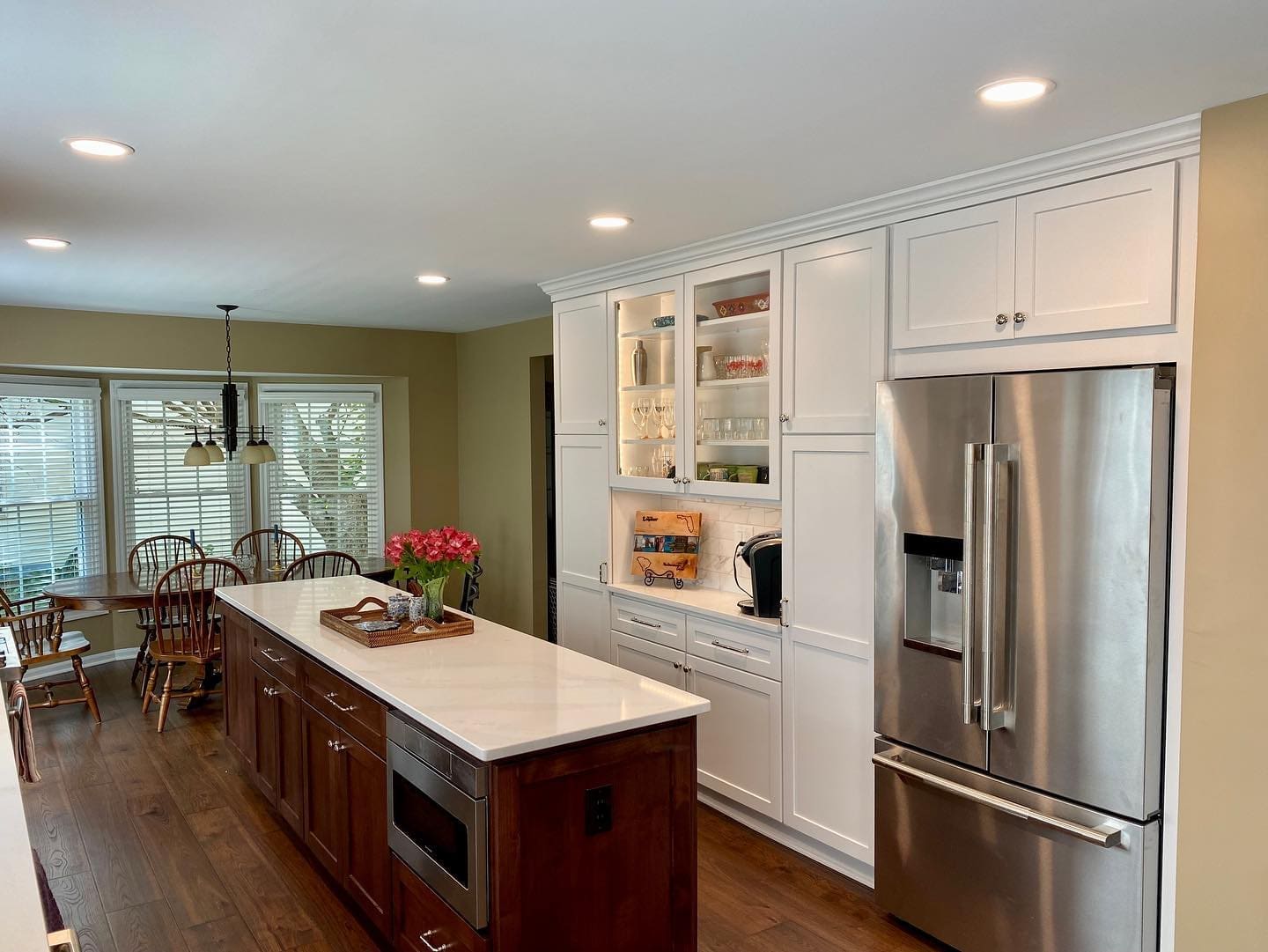The term ‘value’ can be a tricky word for a homeowner to apply toward any major purchase decision; and, when shopping for new kitchen cabinets, this same term can be elusive if the homeowner is not aware of that which constitutes value in cabinetry. Basically speaking, the buyer has to decide if the quality (materials used and construction techniques) of the cabinet warrants the price of the cabinet–and this is referred to as, ‘value’.
It is unwise to rely upon a salesperson to determine, and communicate to you, which products have value – that is for you to decide. Let’s explore a few of the more common construction features and materials used in cabinet making in order to give you a working knowledge of what to look for and what to expect when you start viewing cabinet products.
‘All Wood’ vs. ‘Solid Wood’ Construction
Wood kitchen cabinets are constructed of: solid, uniform wood; plywood; medium density fiberboard (MDF); particle board—or a combination of this same group of materials used in various components. Higher-end cabinetry will be either solid, uniform wood entirely, or solid wood with additional use of plywood; and these cabinets will be referred to as, ‘solid wood’. ‘All Wood’ construction may simply mean that “every component had a tree for an origin”; but may include MDF or particle board which are not nearly as desirable as plywood and solid, homogeneous wood. These ‘engineered composites’ of wood products are inferior, by design, to that of solid wood and plywood; but, they are used in cabinetry to hit a price point that can’t be achieved by utilizing higher cost materials. Plywood is also an ‘engineered’ (made and designed by man) product, but is often more resistant to warping and checking than solid wood—and is more cost-effective to include in a quality cabinet. Make sure to ask the salesperson which materials are used to construct the cabinet, drawers and shelves, as this is the first step in qualifying the value of the product.
The Secret’s in the Drawers!
The quickest means to evaluate the construction of the cabinet is to remove one of the drawers. Once the drawer is out, examine the materials used in the construction of the drawer. Is it solid wood? Is it both solid wood and plywood together? Is it all solid wood, but the wood of the drawer itself is a different species than the drawer face? Is the interior area of the drawer finished, or is it still raw, unfinished material? As you answer these questions, keep in mind that the high-end cabinets have solid wood on the back and sides of the drawers that is the same species as the drawer face; and, yes, they will have some level of finish on them. The more of these features that are present in the drawer, the higher the quality of the cabinet.
Next, examine how the drawer face is attached to the drawer box and how the other right angle joints are attached within the drawer unit. Ideally, these joints are dovetailed (appears to be interlocking puzzle-type pieces), as these are the strongest joints achieved in cabinet making and indicate (typically) that care was taken in putting the thing together. Rabbet and Dado joints are more common in mass-produced cabinetry; and it behooves you to familiarize yourself with these fastening methods as it will assist you in making a sound evaluation of the cabinet construction. Rabbet joints, for example, are quick and easy to produce, but are also considered the most inferior method of joint construction.
Other Points of Cabinet Construction to Consider
If you have the luxury of putting your hands on a single, un-mounted cabinet, put a hand on opposing sides of the cabinet and try to twist the box (the drawer, if applicable, should be pulled out or removed when attempting this). A well-built cabinet won’t contort under this level of torque.
It’s more likely that the cabinets you view will be mounted to a floor or wall. Given this, get on your knees and take a peek inside the cabinet. What you’ll be looking for will be located at the tops and bottoms of where any two sides of the box meet. What you want to see is additional solid wood bracing of some fashion that assists in supporting the integrity of the panel-to-panel construction. The placement of this bracing, again, indicates that extra time and costs were invested in this product and, therefore, commands a greater cost than those cabinets that don’t have such bracing. You will also want to examine the shelves to determine if they are adequately supported and if they’re adjustable or fixed. The adjustability of a shelf is not necessarily a measure of the quality of the cabinet, but the rigidity and quality of the material of a shelf is certainly a factor. Lastly, look to see if the fasteners used in the cabinet are screw or air-driven finish nails. While both fasteners are additionally supported with adhesives, screws indicate that more care has been provided in the construction of the cabinet.






